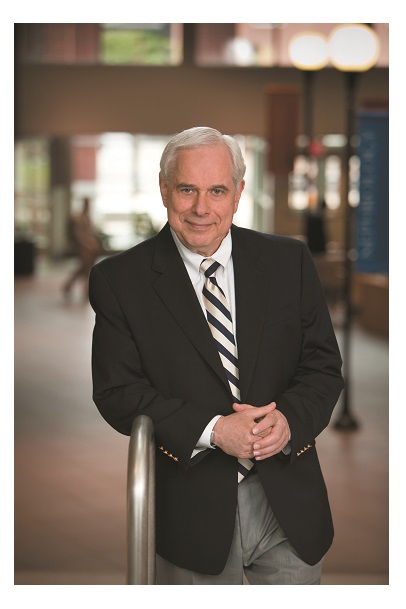Insulin Pump Changes Diabetes Treatment
Robert Sherwin, MD, Professor Emeritus of Medicine (Endocrinology) and former C.N.H. Long Professor of Medicine and Section Chief, Endocrinology; William Tamborlane, MD, Professor of Pediatrics; and Myron Genel, MD, Professor Emeritus of Pediatrics in 1979 with some of the children who participated in the groundbreaking discovery of the first insulin pump.
For decades, Yale University has been committed to better understanding the causes and treatment of diabetes. From the first successful studies of insulin pump technology in the 1970s, to current investigations directed at understanding the cellular mechanisms underlying type 2 diabetes and the immunologic basis of type 1 diabetes, Yale is at the forefront of diabetes research. Clinician-scientists at Yale University School of Medicine have received numerous grants from the National Institutes of Health (NIH), the American Diabetes Association, and the Juvenile Diabetes Research Foundation (JDRF) to support ongoing, innovative, and cutting- edge research in diabetes and metabolic disorders.
Like many discoveries, the development of the first insulin pump was a combination of ingenuity and teamwork. In 1979, Yale doctors were conducting studies to figure out the best way to deliver insulin to children who suffer from diabetes. They discovered that giving small amounts continuously with larger doses at meals worked better than giving one large dose because this more closely resembles the way the pancreas produces insulin. Unfortunately, there was no easy way to accomplish this. Around the same time, another Yale doctor was using a portable pump to help solve a different problem: delivering medicine to children who had a dangerous buildup of iron due to frequent blood transfusions.
 Dr. Robert Sherwin, Dr. William Tamborlane, and their colleagues realized this pump would be ideal for applying what they had learned about insulin delivery to their patients. The insulin pump was first tested in seven children with diabetes and the results were spectacular. The doctors stayed overnight in the hospital to monitor the results. When they began to see that blood sugar levels remained stable in their young patients, they knew that they had hit upon a novel and effective treatment for diabetes.
Dr. Robert Sherwin, Dr. William Tamborlane, and their colleagues realized this pump would be ideal for applying what they had learned about insulin delivery to their patients. The insulin pump was first tested in seven children with diabetes and the results were spectacular. The doctors stayed overnight in the hospital to monitor the results. When they began to see that blood sugar levels remained stable in their young patients, they knew that they had hit upon a novel and effective treatment for diabetes.
 The insulin pump, which today has evolved into a device the size of a beeper, continues to gain momentum; 350,000 diabetic patients per year using it and its popularity continues to grow. Without volunteers like the children and their families who were willing to take a chance on an exciting new treatment, this groundbreaking discovery would not have been possible.
The insulin pump, which today has evolved into a device the size of a beeper, continues to gain momentum; 350,000 diabetic patients per year using it and its popularity continues to grow. Without volunteers like the children and their families who were willing to take a chance on an exciting new treatment, this groundbreaking discovery would not have been possible.